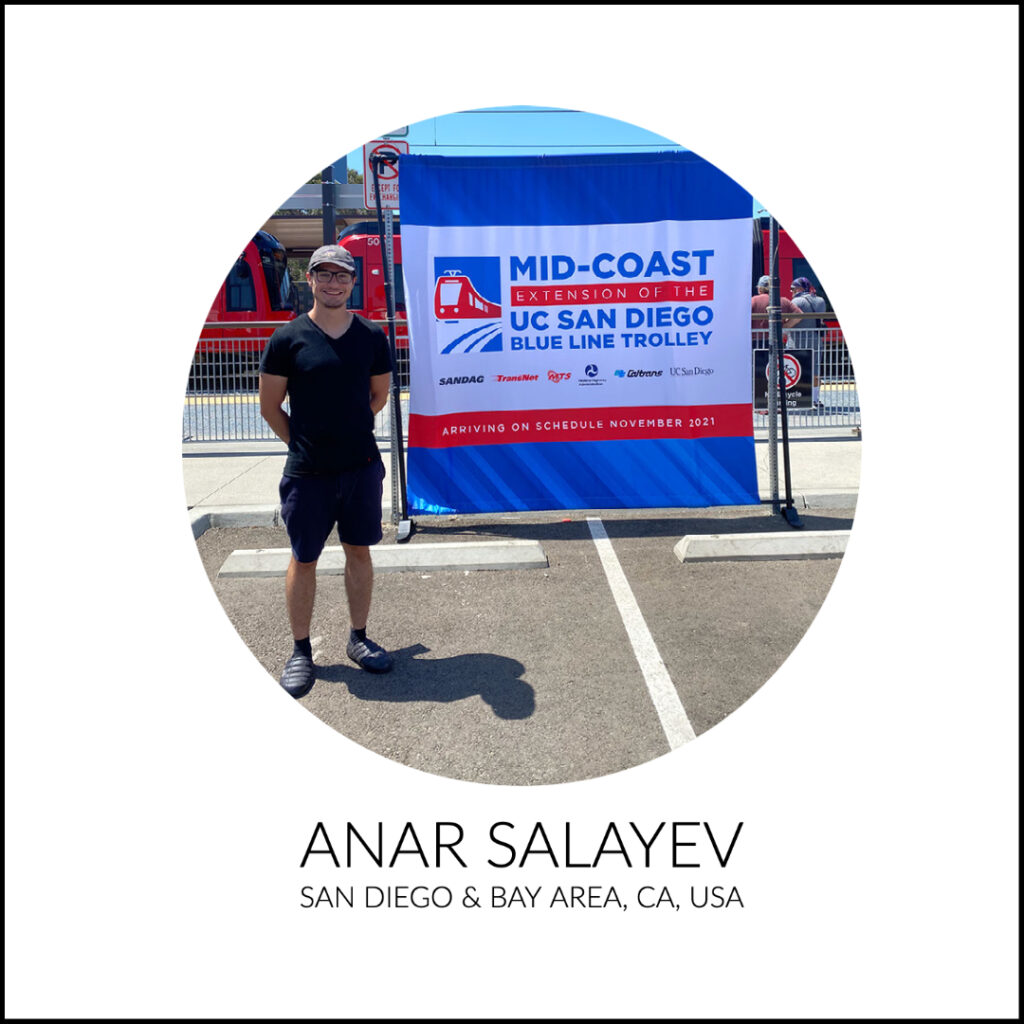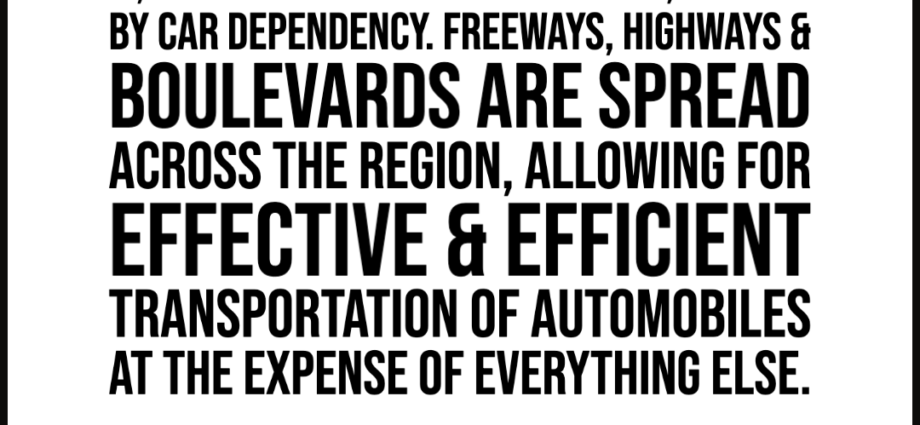SANDAG, the region’s transportation planning group, recently passed the 2021 Regional Plan – a revolutionary paradigm shift for the future of mobility in San Diego. I hope to document the progress made as the plan is broken up into multiple, community-specific plans. Along with highlighting local progress, I also hope to discuss human-centric mobility more generally (and how it’s being implemented elsewhere).
anar Salayev
Introducing our San Diego and Bay Area, USA Correspondent Anar Salayev!
Here at Pedestrian Space we recently launched a Global Walkability Correspondents Network, as a way to build solidarity among walkability advocates around the world and continue to create media on sustainable mobility and urbanism.
We are so grateful to welcome Anar on board as a San Diego and Bay Area Correspondent. Read on for some of his thoughts as we launch this network.
As beautiful as San Diego is, it is, like many North American cities, plagued by car dependency. Freeways, highways, and boulevards are spread across the region, allowing for effective and efficient transportation of automobiles at the expense of everything else. There are just as many “destination neighborhoods” here as there are corridors.
Anar Salayev
WHO
First and foremost, I am a human being. I strive to build relationships – with humans and animals alike. Professionally, I am a product manager, building software and processes to ensure that patients get to their medical appointments safely and on time. My academic background is in cognitive psychology and human factors (the application of psychological principles to design). I am an avid gym-goer, Krav Maga practitioner, hiker, and (recently) cyclist. During quiet hours, I enjoy reading, writing, playing board games, and watching shows with my corgi, Coco.
A focus on walkability will not eradicate the automobile, rather, it will give citizens options – the option to not drop 30% of their earnings on a vehicle, the option for their children to walk to school or a friend’s house safely, the option to breathe clean air.
Anar salayev
WHERE
I’m originally from the Bay Area. After a five-year stint in Los Angeles, I moved down to San Diego, “America’s Finest City”. As beautiful as San Diego is, it is, like many North American cities, plagued by car dependency. Freeways, highways, and boulevards are spread across the region, allowing for effective and efficient transportation of automobiles at the expense of everything else. Once described as a City of Villages, San Diego County, the sprawling metropolis, is filled with walkable, transit-oriented communities. There are just as many “destination neighborhoods” here as there are corridors. SANDAG, the region’s transportation planning group, recently passed the 2021 Regional Plan – a revolutionary paradigm shift for the future of mobility in San Diego. I hope to document the progress made as the plan is broken up into multiple, community-specific plans. Along with highlighting local progress, I also hope to discuss human-centric mobility more generally (and how it’s being implemented elsewhere).
WHY WALKABILITY
Walking allows us to experience the built environment directly, as opposed to the muted experience provided from behind the frame of the windshield. At the macro level, increased walkability reduces our dependence on fossil fuels and our carbon footprint as a society. The retrofitting of infrastructure to further perpetuate walkability could spawn hundreds, if not thousands, of good-paying jobs – those that citizens are proud to work on. Those same citizens, when enjoying the fruit of their labor, can then expect decreased mortality rates in the long-term and increased life satisfaction in the short-term. A focus on walkability will not eradicate the automobile, rather, it will give citizens options – the option to not drop 30% of their earnings on a vehicle, the option for their children to walk to school or a friend’s house safely, the option to breathe clean air.

Anar is a car-enthusiast turned walkability advocate. He seeks a holistic understanding of the built environment. He believes that human-centric urban design will go a long way in combatting climate change, encouraging sustainable practices, and improving health outcomes – both mental and physical.
Learn more about the Global Walkability Correspondents Network here

